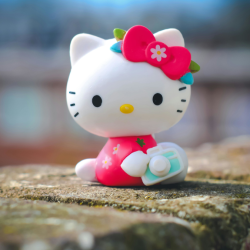Here’s the thing. I don’t think the problem with pushing creativity further lies in the creative department of an agency. In fact, I can categorically say that the number of times I’ve had to have a go at my ECD or creative teams for collectively playing it too safe is… exactly no times ever.
Any conversation about pushing creativity further needs to start with where the obstacles are and how we can overcome, mollify or, regrettably, just accept them and try and work with them.
Health warning — these are not scientific findings. I have no great statistic set to share, other than collective observation based on the last twenty something years.
First of all, there is a collective conservatism (small c) in marketing departments and client handling. We all talk about a good game — we talk about pushing creative and marketing boundaries — but the reality is, at some point, somewhere, in front of the board (esp. commercial directors, senior marketing leaders/leadership ) we will have to stand up and justify why their brand being represented by a talking potato will do wonders for sales. A collision of worlds will occur, and it’s really easy for the CMO to lose or be made to look silly at that point. So (often through experience), they don’t do that again. It’s a kind of (totally understandable) risk paralysis that edges everyone play it a bit safer. Sharp edges get blunted, strong tastes get watered down and pointed insights lose their tip.
Secondly, as per MediaCat’s excellent article on the pique effect by Richard Shotton, people underestimate what it takes to stand out and be remembered: a red t-shirt is not enough — you need feathers to go with it. In many cases the edge wasn’t sharp enough, the taste wasn’t strong enough in the first place. This one lies on the agency along with the line from the planners and ADs of this word who say, “they’ll never buy that!”
These first two I think we can do something about — it relies on evidence, conviction and to bring all the decision makers on the journey. Predominantly though, we (agencies) don’t go anywhere near far enough to help our clients sell the ideas that push it. We need evidence, real and academic, and we need to make the board believe it. It’s all very well and good putting in the same (excellent) Binet and Field charts and graphs on neuroscience — but it still doesn’t convince your average commercial director that their brand should be a talking potato (this is a real example by the way — can you tell?) we all need to work together better to pull in the evidence, work on the comms on how to sell the comms. It’ll be fun, we’ll enjoy it and maybe together we can help us all get more memorable, risky work through the gates.
The final issue though is the toughest, and I don’t think we can overcome it. It’s one of those that we’ll have to work with. And that is that, undeniably, every brief now has two audiences; the actual audience for the product/brand/service and then the audience of people waiting to be offended, looking to virtue signal or simply looking to stir up trouble. This second audience is small, may not do or say anything at all — but the fear of them causes paralysis in every creative agency and client up and down the land, “what if people think we are likening them to potatoes?!”.
Now, many of these challenges have been fair enough and people have had real and important points to make and they have, consequently, pushed us all to be more reflective, inclusive and thoughtful. But, it is now unquestionably affecting how far we push it, to the point where consideration in this space often trumps the primary audience.
So what do we do?
Ignore it? Embrace it? I think two things. Firstly, double down on the basic principles of effective advertising. We are here to sell stuff, so let’s be transparent (or honest as I like to say) and let’s entertain, inform or provoke whilst doing it. Let’s push the equation as far as possible. Let’s wear the feathers, but be clear why we are doing it. Not ulterior motives but obvious motives. This helps.
Secondly, lets build and progress our briefs from stage 1 to address any issues we might face. Let’s be proud, inclusive, joyous, etc. from the off — let’s not engineer it in later to appease an imagined audience — that’s when it feels clunky. If our hearts and motives are all in the right place and are transparent, then I think we can all push it much harder and further.
Oh and any client out there that wants a campaign with a potato as the hero — give me a call, we’ve got a belter!
Featured image: Shukhrat Umarov / Pexels




























